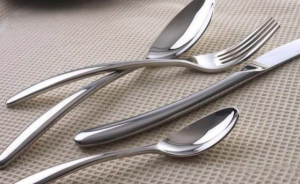Stainless steel cutlery, a very broad definition, it includes a wide range of products. Our inspection usually needs to pay attention to this kind of products have the following points in common:
1. There should be no serious wire drawing marks, pitting and uneven polishing caused by the light difference.
2. Except the cutting edge, the edge of various products should be no quick mouth, stabbing phenomenon.
3. The surface is smooth, without obvious wire drawing marks, no dented bore, no quick mouth on the edge and prickle.
4. The welding part is firm, without cracks, coke or spines.
5. On the outer packing, there should be the manufacturer’s name, address, trademark, specification, product name and article number

Inspection point:
1. Appearance: scratch, pitting, crease, contamination.
2. Special inspection: thickness tolerance, weldability, corrosion resistance, polishing performance (BQ) (pitting) is also not allowed in the spoon, spoon, fork, production, because it is difficult to throw off the polishing. (scratches, creases, pollution, etc.) these defects are not allowed to appear high or low grade.
3. Thickness tolerance:
Generally speaking, different stainless steel products, the requirements of raw material thickness tolerance is also not the same, like two tableware thickness tolerance requirements are generally higher, for -3~5%, and a tableware thickness tolerance requirements are generally -5%, dealers on the thickness tolerance requirements are generally between -4%~6%. At the same time, different products for domestic and overseas sales will also lead to different requirements for raw material thickness tolerance. General export product customer thickness tolerance requirements are higher.
4. Weldability:
Product USES of different requirements for welding performance are also different. A kind of tableware does not do the requirement to the welding performance generally, include partial boiler class enterprise even. But the vast majority of products need raw materials for good welding properties, like second-class tableware. General welding requirements to be flat, to be positive. The welding part should not be scorched.
5. Corrosion resistance:
The vast majority of stainless steel products for corrosion resistant performance is good, like a, 2 kinds of tableware, the corrosion resistance of some foreign to the product and do test: in NACL aqueous solution heated to boiling, after a period of time the best solution, wash and drying, weight loss, to determine the degree of corrosion (note: the product polishing, because of the sand cloth or sandpaper containing Fe, will cause the test surface rust spots)
6. Polishing performance (BQ) :
At present stainless steel products in production are generally polished this process, only a few products do not need polishing. So this requires the raw material polishing performance is very good. The main factors influencing the polishing performance are as follows:
(1) raw material surface defects. Such as scratch, pitting, acid pickling, etc.
(2)Material material problem. Hardness is too low, polishing is not easy to shine (BQ is not good), and hardness is too low, in the deep stretch of the surface easy to appear orange peel phenomenon, thus affecting BQ. High hardness of BQ is relatively good.
(3)After deep stretching, small black spots and RIDGING will appear on the surface of the area with large deformation, thus affecting the BQ property